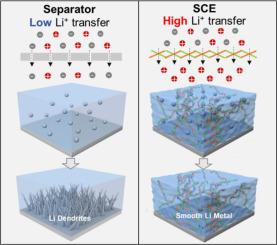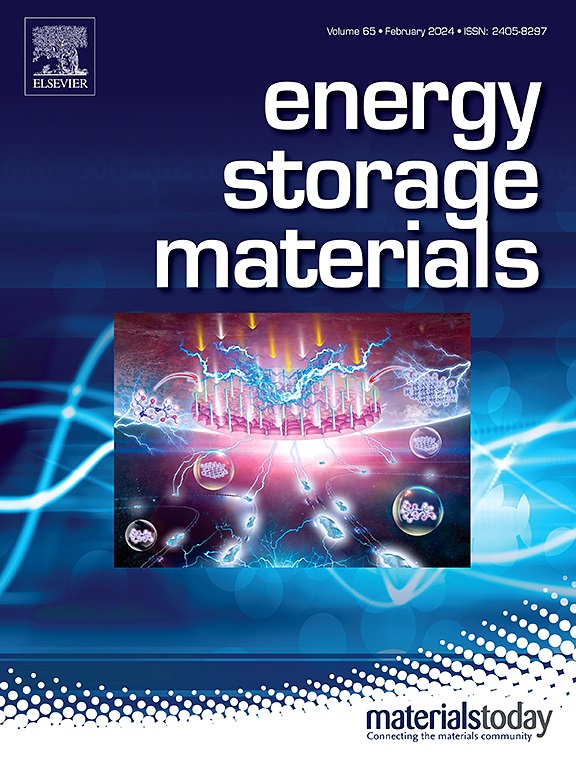Self-assembled silica-cellulose-ether ternary nanocomposite electrolytes for robust quasi-solid-state lithium metal batteries
IF 18.9
1区 材料科学
Q1 CHEMISTRY, PHYSICAL
引用次数: 0
Abstract
Solid electrolytes are a key enabling technology for the safe operation of Li-metal batteries, as they can suppress side reactions and Li dendrites. However, their microstructural heterogeneity and metastability largely restrict their mechanical and electrochemical properties. Herein we report a one-pot sol-gel self-assembly for in-situ constructing silica-cellulose-ether nanocomposite as solid-state electrolytes in Li-metal batteries. The obtained composite features mesoporous silica nanoparticles grafted to functional cellulose nanofibers to form cross-linked frameworks, in which liquid ether electrolytes are in-situ immobilized. By regulating chemical interactions between three nanocomponents for optimizing electrolyte's distribution and ionic conduction, such composite design enables excellent electrochemical properties, showing rapid Li+ ionic conductivity (6.9 × 10−4 S cm−1) and high electrochemical oxidation tolerance (4.87 V vs Li/Li+). Notably, the quasi-solid-state Li-metal batteries using composite membranes exhibit outstanding battery performance: Li//LiFePO4 cell delivers an ultra-high capacity retention of 97.5 % after 200 cycles, and Li//RuO2-O2 cell exhibits an extended cycle-life over 300 cycles.


求助全文
约1分钟内获得全文
求助全文
来源期刊

Energy Storage Materials
Materials Science-General Materials Science
CiteScore
33.00
自引率
5.90%
发文量
652
审稿时长
27 days
期刊介绍:
Energy Storage Materials is a global interdisciplinary journal dedicated to sharing scientific and technological advancements in materials and devices for advanced energy storage and related energy conversion, such as in metal-O2 batteries. The journal features comprehensive research articles, including full papers and short communications, as well as authoritative feature articles and reviews by leading experts in the field.
Energy Storage Materials covers a wide range of topics, including the synthesis, fabrication, structure, properties, performance, and technological applications of energy storage materials. Additionally, the journal explores strategies, policies, and developments in the field of energy storage materials and devices for sustainable energy.
Published papers are selected based on their scientific and technological significance, their ability to provide valuable new knowledge, and their relevance to the international research community.
 求助内容:
求助内容: 应助结果提醒方式:
应助结果提醒方式:


